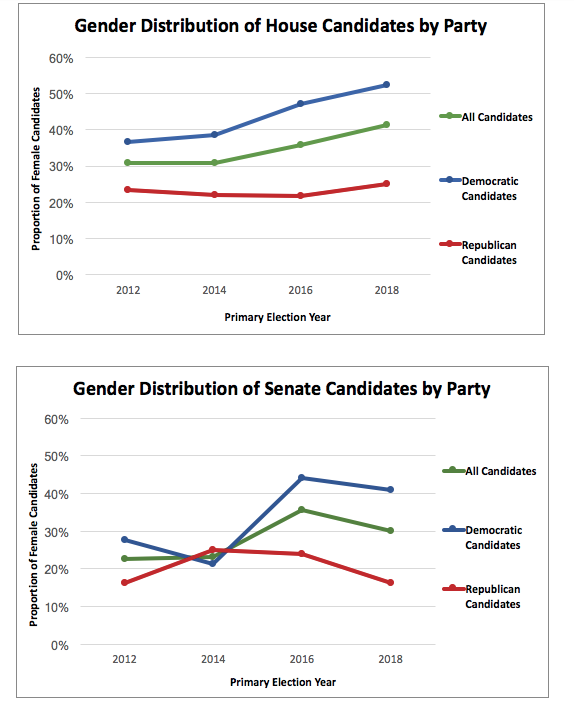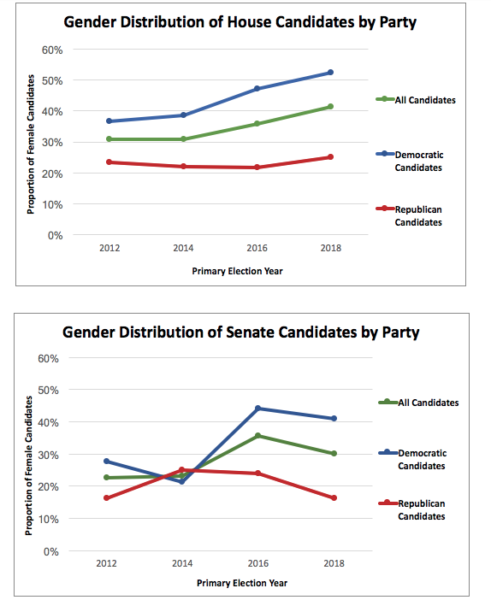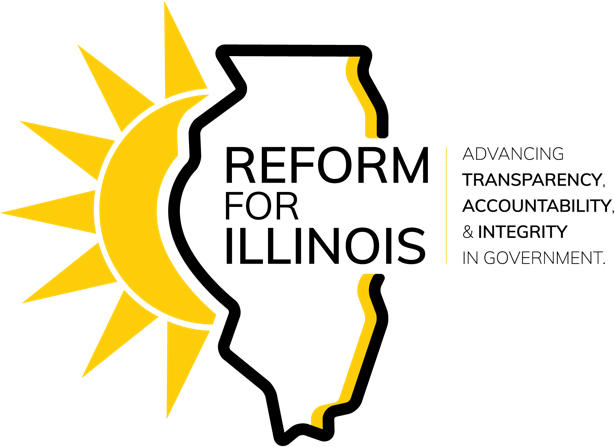Illinois Filings Show Mixed Results for Female Candidates

Across the country, there has been a popular narrative among many media outlets that more women will run for office in 2018 than ever before. This is perceived to be driven partly by national politics, and by the recent wave of conversation around sexual harassment issues.
In Illinois, however, it is unclear whether a similar activation has occurred. At the end of the filling deadline, the percentage of women who had filed to run for state legislative offices offered mixed conclusions. While the average percentage of female candidates for 2018 State House and Senate Primary Elections is just 36%, female representation differs drastically depending on chamber and political party.
For example, female participation in Primary Election races for the Illinois House of Representatives will reach a new high in 2018, at 41% of all candidates. This is the highest percentage of female candidates to run for these seats in the last three election cycles.
State Senate races, however, have seen mixed results in terms of female candidates in Primary Elections. For this election cycle, only 30% of the candidates for these seats are women. This represents a six point decrease from 2016.

Percent of Female Candidates Also Varies by Party
The percentage of women running in Democratic Primary Elections in 2018 is more than twice the percentage of women running in Republican Primary Elections for General Assembly offices. Female Democratic Primary Election candidates make up 52% of State House races, and 41% of State Senate races. Only 25% of State House and 16% of State Senate candidates in Republican Primary Elections are women.
This gender gap between parties has been fairly consistent in Illinois. Since 2012, there was only one year in which a higher percentage of women ran in Republican Primary Elections for State House or State Senate than in Democratic Primary Elections.
This trend may help explain the overall decline in 2018 Primary Election Senate seats contested by women. The Senate seats up for election in 2018 are disproportionately Republican-held, resulting in a higher number of Republicans running for those seats, and leaving fewer women running for the Senate overall.
Despite the party gap in female candidates for the General Assembly, there is more parity in candidates for statewide offices. Republican Jeanne Ives is running for Governor, and GOP candidates Erika Harold and Darlene Senger have filed for Attorney General and Comptroller, respectively. Susana Mendoza is the only statewide Democratic nominee guaranteed to reach the General Election, as AG candidates Nancy Rotering and Sharon Fairley would need to defeat each other and six other male candidates to advance past the Primary Election.
Additionally, the office of Lieutenant Governor has three women vying for the position in 2018, tying with 2014 for the most women to run for the office in Illinois history. Lt. Governor Evelyn Sanguinetti is running for re-election with Governor Bruce Rauner in the Republican Primary, while Democratic candidates JB Pritzker and Daniel Biss have chosen State Representatives Juliana Stratton and Litesa Wallace on their tickets, respectively.


Work Remains to Achieve Gender Parity in Illinois Politics
Despite the national narrative that more female candidates are cropping up for 2018, the percentage of female candidates in Illinois legislative primaries paints a mixed picture. While the percentage of women running in Primary Elections for seats in the House of Representatives is at its highest point since at least 2012, the percentage of women running in Primary Elections for State Senate is at its lowest. Republicans, in particular, tend to have fewer women running for legislative offices.
These mixed results may indicate that the gender imbalance in politics stems from systemic issues that cannot be overcome solely by an increased interest among women. Women may still be less likely to believe they are qualified for office, less likely than men to receive the suggestion to run for office, or discouraged by perceived gender bias. As Illinois elections become more expensive, they may also become more exclusionary to candidates who aren’t part of traditional political networks. Unfortunately, these roadblocks have led to a political landscape in Illinois that is still far from gender parity.
Back
